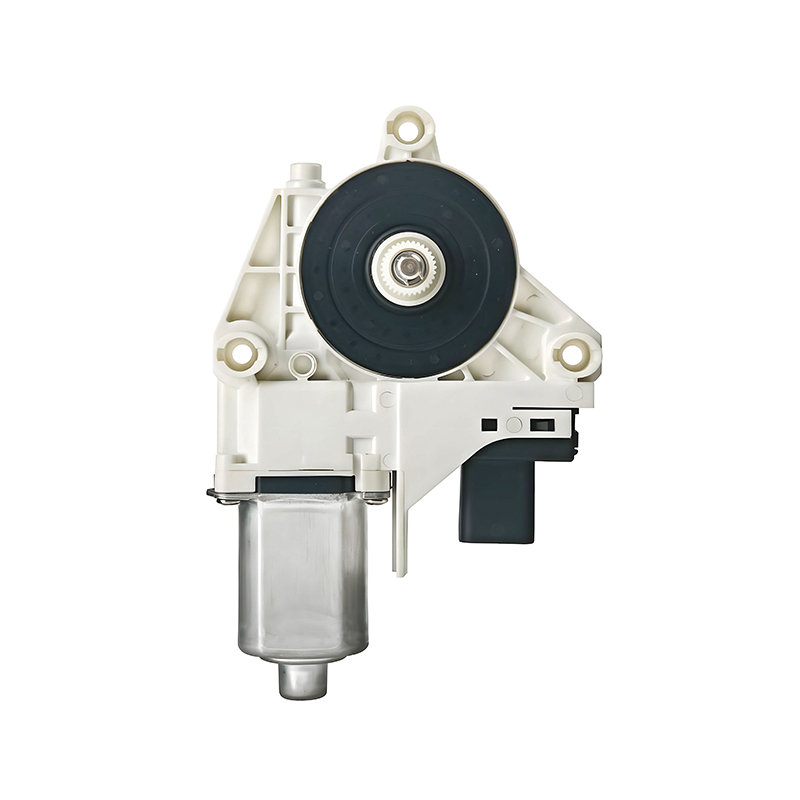In the automotive industry, efficiency and precision during assembly are critical factors that influence production timelines and overall vehicle performance. One area where improvements can have a significant impact is the design of motor housings, particularly in components like the rear power window motor. Recently, the development of a compact gearbox housing has demonstrated a positive effect on assembly flexibility, addressing several challenges faced by manufacturers when integrating complex parts such as front axle car parts and vehicle motors.

Traditionally, gearbox housings in motors such as those used in rear power window motor systems have been bulky and rigid, making the installation process more cumbersome. The increased size and weight not only add complexity to the assembly line but also create difficulties when working in confined spaces within vehicle doors or chassis. This can advance to longer assembly times and a higher chance of alignment errors, both of which impact the overall quality and efficiency of the production process.
The introduction of a more compact gearbox housing addresses these issues by reducing the physical footprint of the motor assembly without compromising durability or performance. This compact design makes the rear power window motor easier to maneuver and install, which in turn allows assembly teams to adapt more quickly to different vehicle models or configurations. The ability to accommodate variations in front axle car parts placement or design has also improved, as the smaller housing can fit more easily alongside other mechanical components.
Another benefit of the compact gearbox housing lies in its contribution to space optimization inside the vehicle door and adjacent compartments. Space in automotive design is always at a premium, and reducing the size of components like the rear power window motor assembly frees up room that can be used for other purposes, such as enhanced insulation or additional safety features. This also simplifies the integration with front axle car parts and other mechanical systems, as the smaller gearbox housing reduces interference and potential conflicts during the assembly process.
Manufacturers have observed that with this compact gearbox housing, assembly line workers experience fewer physical constraints, pilot to smoother operations. The easier handling and installation reduce fatigue and lower the risk of improper fits, which can cause failures or the need for costly rework. This is particularly relevant when working with rear power window motors, where precise alignment is necessary for smooth and reliable window operation. The compact housing allows for tighter tolerances and more consistent results, improving the reliability of the final product.
Moreover, the compact design has allowed engineers to rethink the motor layout, enabling innovative approaches to integrating front axle car parts in ways that were not feasible before. The enhanced flexibility in positioning these components can contribute to improved vehicle balance and handling by allowing slight adjustments in weight distribution without extensive redesigns. This shows how advancements in one part of the vehicle system can have ripple effects on other areas, including the chassis and suspension systems linked to front axle car parts.
The materials used in the new gearbox housings also play a role in the improved assembly flexibility. Lightweight yet durable materials reduce the overall weight of the rear power window motor assembly, easing handling during production. Additionally, these materials can absorb vibrations and noise better, which benefits both the assembly process and the long-term comfort of vehicle occupants. While the housing is compact, it does not sacrifice strength, which ensures the rear power window motor can withstand repeated use over the vehicle's lifespan.
Integration with front axle car parts has become more seamless as the compact gearbox housing allows for a more modular approach to assembly. Instead of custom fitting or complex adjustments, the smaller housing enables standardization across various motor models, simplifying inventory and logistics. This also facilitates easier maintenance and replacement, as service teams can work with standardized parts that fit well with front axle car parts and related systems.
From a manufacturing perspective, the move toward compact gearbox housings aligns with trends in automation and robotics on assembly lines. The reduced size and weight of the motor assembly make it more compatible with robotic arms and automated tools, which can increase precision and speed during installation. This not only improves consistency but also reduces the likelihood of damage to delicate components like the rear power window motor during handling.
In conclusion, the development of a compact gearbox housing represents a practical innovation that enhances assembly flexibility in automotive production. By simplifying the installation of the rear power window motor and enabling better integration with front axle car parts, this design advancement contributes to more efficient manufacturing and improved vehicle performance. It also highlights how careful attention to component design can address multiple challenges, from space constraints to handling ease and compatibility with other vehicle systems. As automotive designs continue to evolve, solutions like compact gearbox housings will play an important role in supporting flexible and responsive production processes.
Your email address will not be published. Required field are marked*